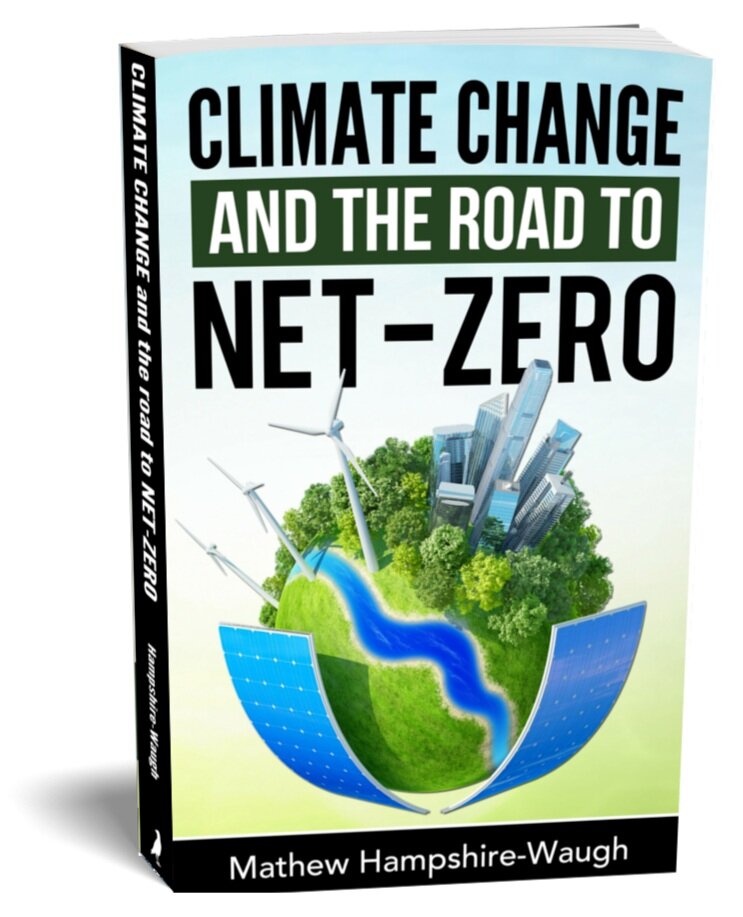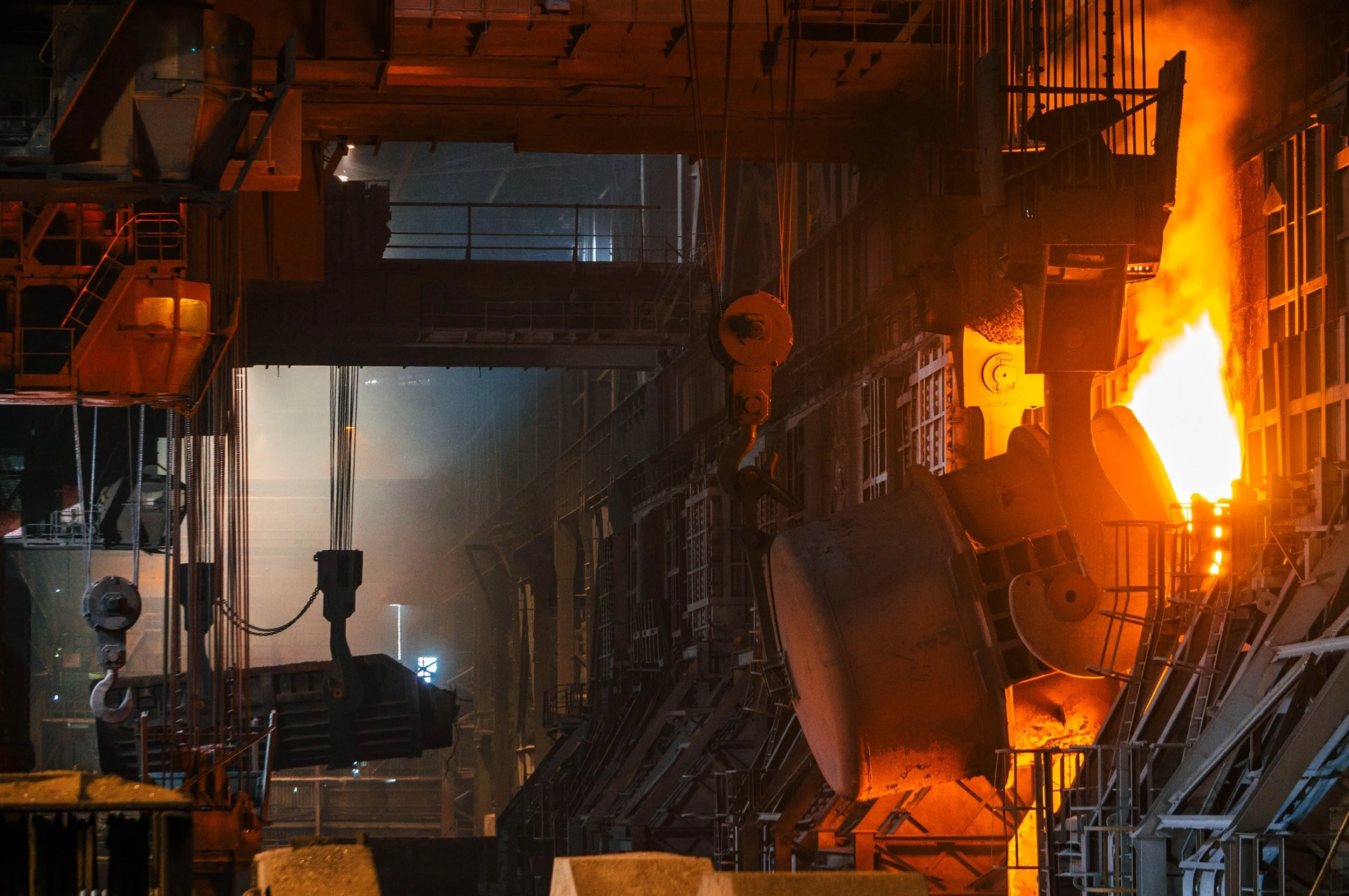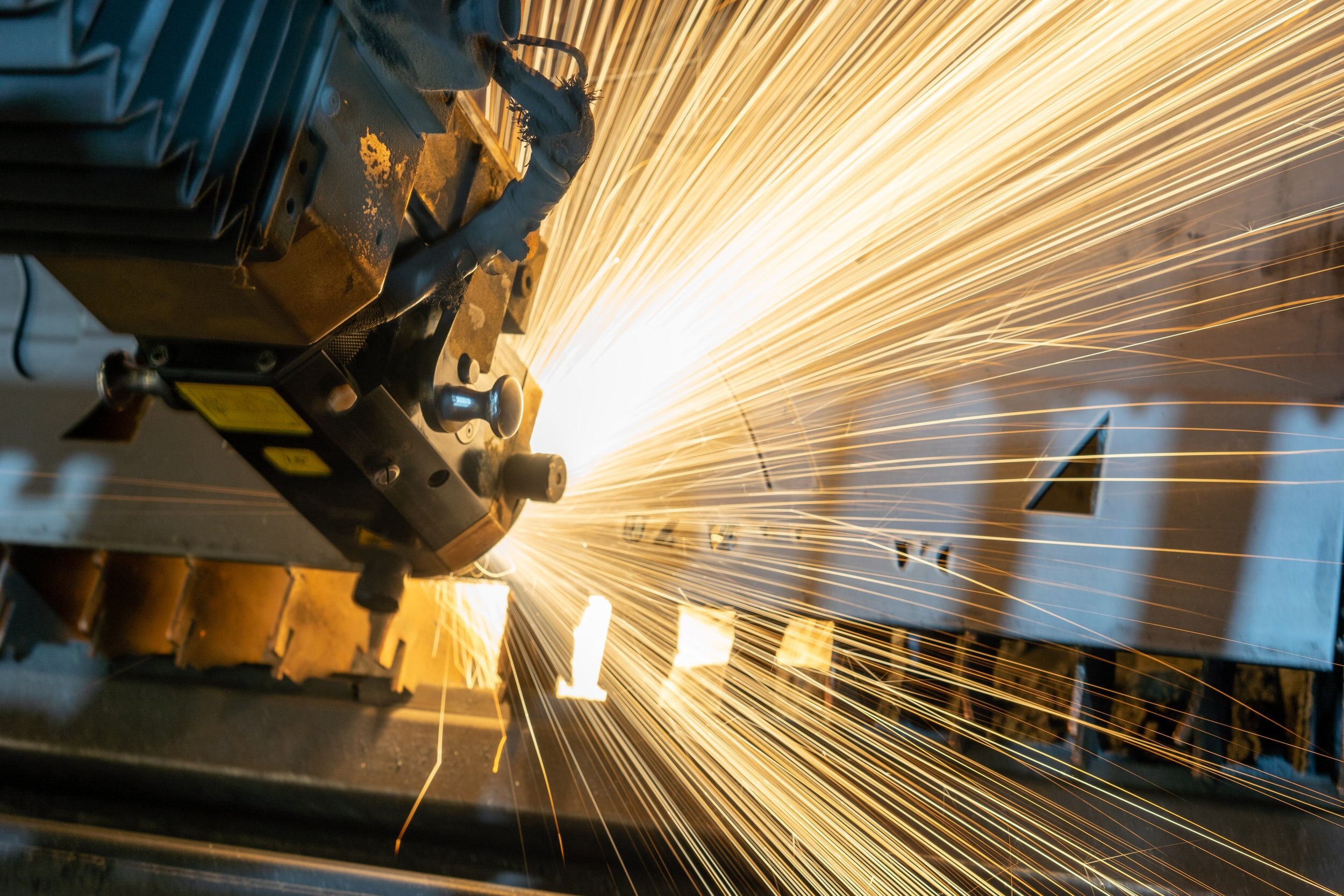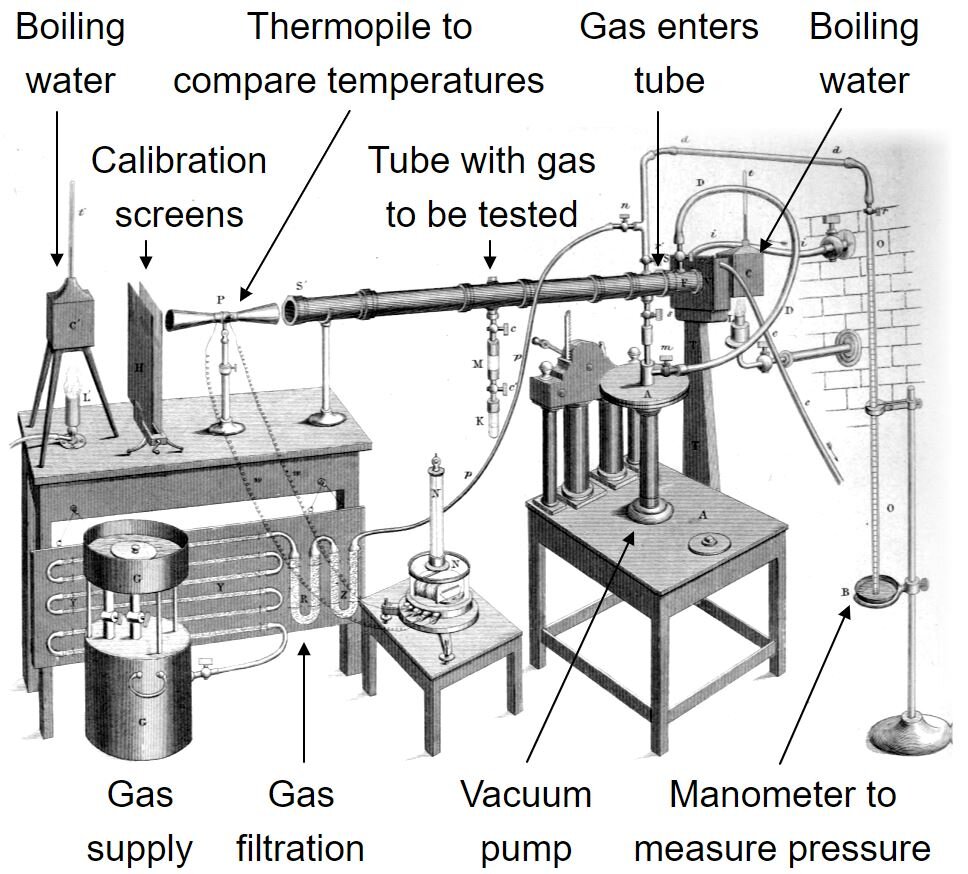Net-Zero Industry
In this post from NET-ZERO:
How do we reduce industrial greenhouse gas emissions? Net-Zero options for steel, cement, chemicals, and goods finishing.
Are wood based products better for the planet? Sustainable sourcing and the potential to lock away ten percent of annual carbon emissions in long-lived wood based products.
What is industry 4.0 and how could it help avoid climate change? Smart factories, the internet of things, and connecting the value chain - efficiency, information, and the circular economy.
Metals: Net-Zero Technology
The production of metal is the largest use of industrial energy accounting for 7 trillion kWh final energy, 1,700 million tonnes of product, and with 2.7 billion tonnes of CO2 emissions each year. Steel has the biggest share of production with 1,600 million tonnes metal per year: enough to fill Wembley Stadium 200 times over.
Steel Production
Virgin steel production starts with the mining of iron ore which is then mixed with coking coal at 1200⁰C in a blast furnace, converting the mix to purified metallic iron (pig iron) and carbon dioxide waste. The carbon rich pig iron is passed through a basic oxygen furnace to remove excess carbon and convert the iron into steel. Two thirds of steel is produced in this way today.
The remaining one third of production is recycled steel - reformed in an electric arc furnace. The process uses an electrical current to heat scrap metal to 1,800⁰C and turn it back into purified steel. This process uses just 1,200 kWh of energy per tonne and runs on electricity.
Zero Carbon Steel
The electric arc furnace provides a natural route to decarbonising the steel industry at a comparable if not lower cost to the virgin process. Once powered by renewable electricity, it becomes zero carbon. The only hurdle is the availability of recycled steel which is already the most widely recycled material on Earth.
Already, 85% of waste steel is reused, so there is little room to increase this percentage. However, steel producer Mittal estimates that based on the ageing of infrastructure (increased waste availability) and the projections for future construction growth, by the second half of the twenty-first century most steel can be produced from scrap.
In the meantime, replacing coking coal with hydrogen could help decarbonise virgin steel production. Hydrogen can reduce iron ore to metallic iron with water as the by-product (rather than CO2). However, given green hydrogen from electrolysis will cost at least three times more than coal this will add around $200 per tonne to the production cost (30% to the price)
Chemicals and Plastics: Net-Zero Technology
The production of chemicals and plastics are the second largest use of industrial energy, accounting for over 5 trillion kWh final energy, over 1,200 million tonnes of product, and 2 billion tonnes of CO2 emissions each year. The chemicals industry spans millions of products based around either organic chemicals and plastics (which start life as fossil fuels run through a petrochemical cracker facility) or inorganic chemicals (made from mineral resources). The oil and gas feedstock consumed in producing chemicals and plastics adds another 10 trillion kWh - most of this carbon will be semi-permanently bound up in the plastics or chemicals proucts which can take years to hundreds of years to decompose into CO2 or other molecules.
Zero Carbon Chemicals
Switching petrochemical production to zero carbon requires shifting natural-gas-powered heating and compression to zero carbon electricity or adding carbon capture. High temperature fossil fuel heating processes can be replaced with resistance, induction, or electric arc heating. Switching from cheap gas to more expensive electrical heating will increase energy costs 2-3 times. Lower temperature processes which can use microwave heating may be more efficient. Decarbonising chemicals production will likely add around $150 per tonne to production costs (10% to the price of basic chemicals) even with cheap solar electricity.
The cracker of the future consortium is a combination of some of the largest global chemical companies, including BASF, Borealis, Lyondell Basel, SABIC, BP, and Total, who are attempting to electrify the cracking process used to manufacture the basic building blocks of the chemicals industry.
Cement: Net-Zero Technology
Cement consumes over four trillion kWh of industrial energy to produce over 4,000 million tonnes of product each year. The process energy used releases 1.5 billion tonnes of CO2, and the CO2 by-products add another two billion tonnes. Cement plants are typically fuelled by coal or gas heating.
Zero Carbon Cement:
Removing the CO2 emissions from cement requires either carbon capture and storage or new chemistry plus electrification of heating processes. The high carbon content of the exhaust gases makes the carbon capture process a little easier and cheaper (than for electricity plants), but the shift to zero-carbon electricity for high temperature heating increases the fuel costs by 2-3 times. The basic cost of manufacturing cement is around $50-60 per tonne today. Carbon capture adds another $12 and switching to electrical heating adds another $25. The total costs add up to around $90 per tonne which would push the price up by 40%.
Wood Products: Net-Zero Technology Options
Every year, we use up to 1,000 million tonnes of dry wood products in construction, furniture, and consumer goods. Harvesting and processing the wood is relatively low energy at just 300 kWh per tonne and, if the wood is sourced from sustainably managed forests which can regrow, then the wood products will sequester CO2 from the atmosphere.
Dry wood contains 50% carbon by weight so every tonne of wood has taken 1.8 tonnes of CO2 from the atmosphere. Every tonne of wood product reduces atmospheric carbon dioxide by 1.5 tonnes (including the processing emissions).
A greater proliferation of sustainably sourced wood products could add a significant offset to industrial emissions. If we replaced 30% of concrete with wood building products, we could drawdown 4.5 billion tonne of CO2 each year which is nearly 10% of current emissions. Engineers have already designed and built 18 storey wooden skyscrapers in Norway, Canada, and the US.
Adding It Up
The chart below shows the cost break up of existing fossil-fuel-based manufacturing of materials compared to the cost of the equivalent net-zero manufacturing process. A shift away from metal consumption coupled wth greater availability of recycled scrap will help shift the steel industry towards the Electric Arc process which is of comparable cost. However, chemicals, cement and fertiliser (ammonia) will likely come with a higher cost of manufacture.
Goods Finishing: Net-Zero Technology
Rounding off industrial energy, let’s consider the further processing stages in the production of manufactured goods. Once the primary resources have been extracted and processed, the raw materials must be transformed into finished products. The many production routes and manufacturing techniques developed over the last 200 years are used to turn metals, chemicals, plastics, paper, textile, and wood into building materials, electronic goods, cars, packaging, clothes, furniture, and other consumer items.
The combination of these millions of different manufacturing processes uses roughly 11 trillion kWh of energy to produce 9 billion tonnes of stuff (excluding aggregates). That equals 1,300 kWh processing energy per tonne (roughly half electricity and half fossil fuels) and adds a further 5-6 billion tonnes of CO2 into the atmosphere every year.
Decarbonising goods finishing has no single answer but broadly requires replacing fossil fuels with zero carbon electricity.
The Fourth Industrial Revolution
The last 200 years of industrial progress started with the invention of the steam engine in 1781, led to the development of mass production and specialisation of labour through the early twentieth century, and the integration of IT hardware in the 1980s. The next phase of industrial progress has been termed industry 4.0 and will be driven by the ongoing rapid developments in information technology software and ever-increasing penetration of hardware.
Manufacturing facilities, businesses, and homes will continue to add more digitally connected devices such as sensors, tags, GPS, and other monitoring tools to everything from machinery, transport equipment, and automated business control systems to home assistants, cars, fridges, and energy meters. The devices are collectively known as the internet of things (IoT) and they enable an increasing interconnectivity of us, the consumer, with industrial manufacturing.
Retail giants such as Amazon, Alibaba, and eBay have already disrupted “bricks and mortar” retail by integrating e-commerce and advanced logistics with finished goods wholesalers. Over the last 20 years, Amazon has gone from a small online bookseller to a trillion-dollar business, with over 50% of US online retail sales and more than 5% of all retail. Amazon are leading the charge on connecting the real world with the digital world and are already employing advanced machine learning algorithms to predict what you are going to buy so they can move the product to your nearest automated warehouse ready for one-day or one-hour delivery before you have even placed the order.
The next wave of digital integration will extend all the way up to basic industrial materials, energy, and labour. Once the entire industrial supply chain can digitally talk to one another, this will lead to greater levels of automation with advanced software, artificial intelligence, and big data left to control automated manufacturing processes, robots, and driverless vehicles, and drones for the day-to-day running of manufacturing and logistics.
The digitisation of industry will improve efficiency through all manufacturing by streamlining resource management, creating less waste, allowing for more localised production, and fewer product miles (less outsourcing to cheap labour regions). It will build on a natural tendency towards more efficient and easier to automate electricity-driven processes like injection moulding plastic (rather than shaping metal), offsite modular construction (rather than bespoke builds), and techniques such as 3D printing for small batch tailored products. Fundamental changes to the way goods are manufactured will naturally transition materials towards low embedded energy and low carbon.
Information about ethical sourcing, carbon emissions, and quality should be far easier to track and verify through each stage of the production process. This will allow online retailers such as Amazon to better inform us on the embedded carbon emissions of the products we buy.
Stacking it all Up
Switching all areas of our industrial processes to net-zero carbon using today’s technology can be done at similar capital cost and using 40% less energy. However, average energy prices would increase by 80% and feedstock costs would increase by one quarter. The total annual cost of building out the industrial equipment and running the production increases by 10% compared to the existing fossil fuel system.
However, repeating the calculation for fully scaled (cheaper) renewables technology means the average energy price is just 30% more. The total net-zero industrial system costs 5% less than the fossil fuel alternative.
Then assuming we can replace 30% of building products with sustainable wood, a share of metal moves to lower embodied energy products, and digitisation improves efficiency by one fifth - total costs could be another 20% lower.
Re-engineering the industrial system for peak stuff and zero carbon would cost up to 25% less than remaining bound to fossil fuels. It allows for high levels of consumption for all (if that’s what we truly want), makes better use of mineral resources, and improves consumer experience. One third of industry already has zero carbon enabled technology and the remaining two thirds pose only incremental technology challenge. The biggest hurdle will be realigning the economics of industries such as cement, fertiliser, or chemicals to incentivise change.





































